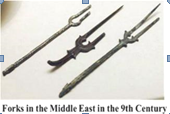题目内容
When a Man Made Fun of His Seatmate
Soon after Savannah Phillips, a 33-year-old mother, sat down in her window seat on a United Airlines flight this past May, she glanced(瞥见)over at her seatmate. He was busy ___________. His phone was not far from her face and the letters were unusually _________, making it easy for Phillips to read the message on it: “Hey Babe, I’m sitting next to a smelly fatty.”
Tears streamed down the poor woman’s face as she tried to hide herself to the corner, trying to make herself as _________as possible.
“It awoke all the unpleasant things I think about myself. I always preferred to sit alone on flights because of my _________, fearing others next to me would feel uncomfortable. ” Phillips wrote in a Facebook post after the flight.
Sitting a row behind them was Chase Irwin, a 35-year-old bar manager. He could see Phillips crying—and then he oversaw the man’s texts.“I could not have this guy,who’s making fun of her, sit next to her this whole flight,” he said in an interview later.
_________, Irwin unlocked his seat belt and went over to the texter. “Hey, I need to talk to you,” Irwin said. “We’re switching(交换)seats—now.” When the texter asked why, he said, “You’re texting about her, and I’m not putting up with that.”
The texter quickly _________. Irwin took his place next to Phillips and was soon cheering up his new seatmate.
“He ___________me not to let that guy get to me and that everything was going to be fine,” Phillips wrote. They spent the rest of the flight chatting like friends.
With her trust in humanity restored, Phillips wrote this on Facebook: “I was so grateful(感激的)he was there. What he did set such a good_______for others to follow, that is, sticking up for people when they need help.”
1.A.texting B.talking C.playing D.working
2.A.beautiful B.large C.discouraging D.surprising
3.A.warm B.brave C.small D.light
4.A.build B.face C.manner D.character
5.A.Probably B.Fortunately C.Successfully D.Immediately
6.A.promised B.remained C.agreed D.insisted
7.A.encouraged B.ordered C.warned D.trained
8.A.goal B.example C.task D.time



